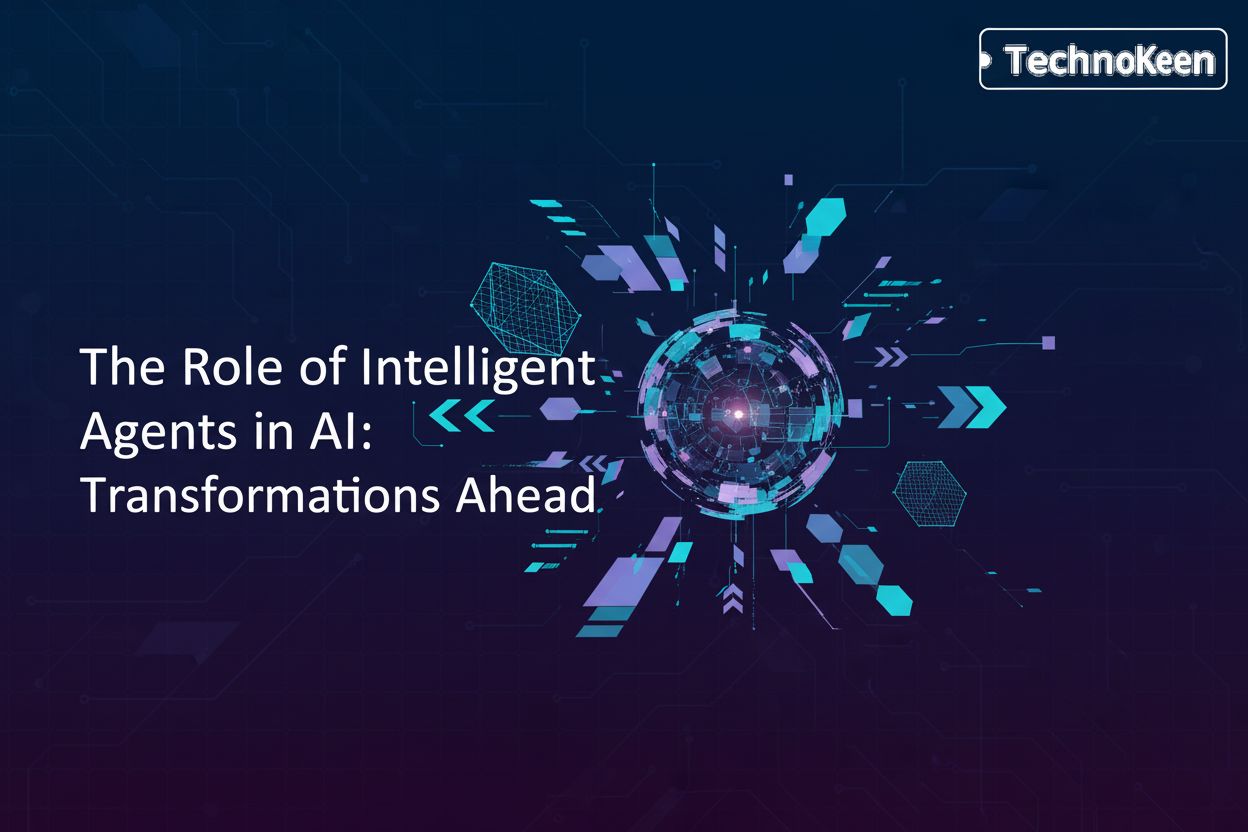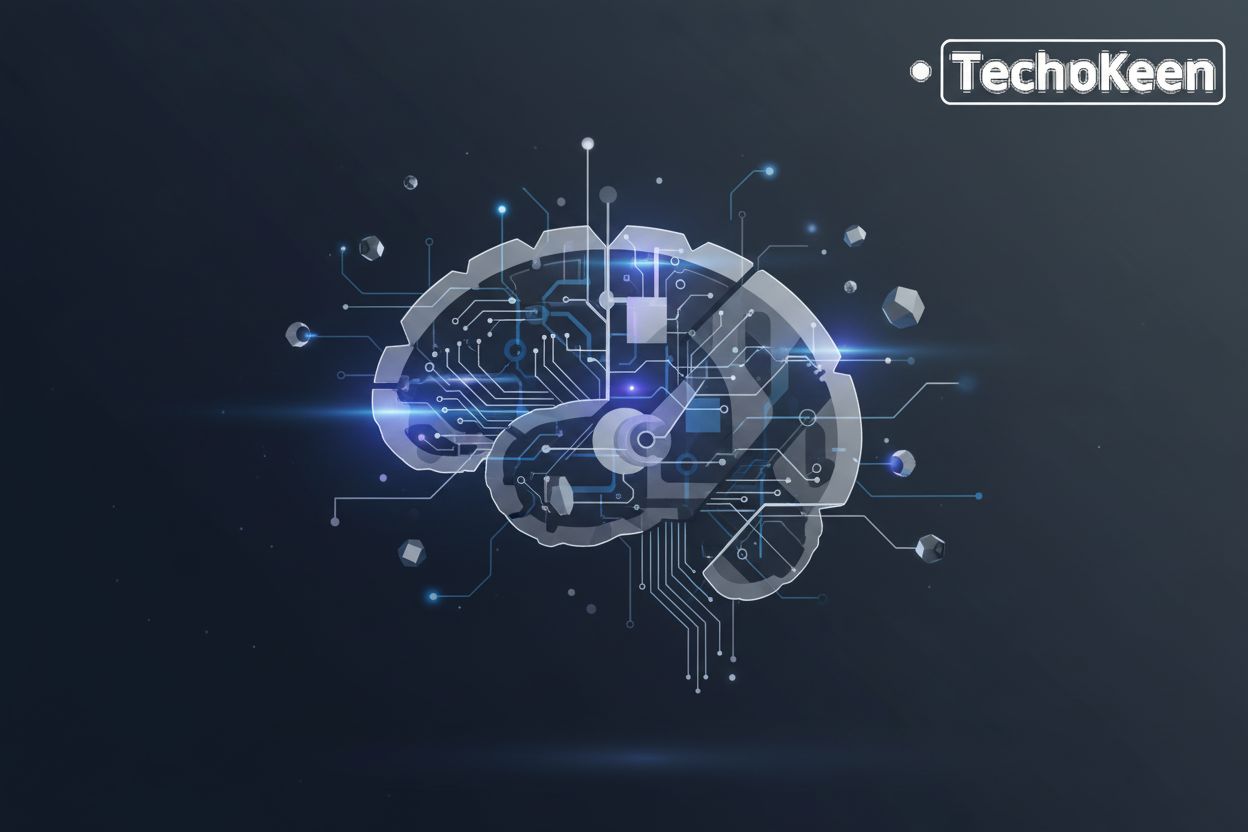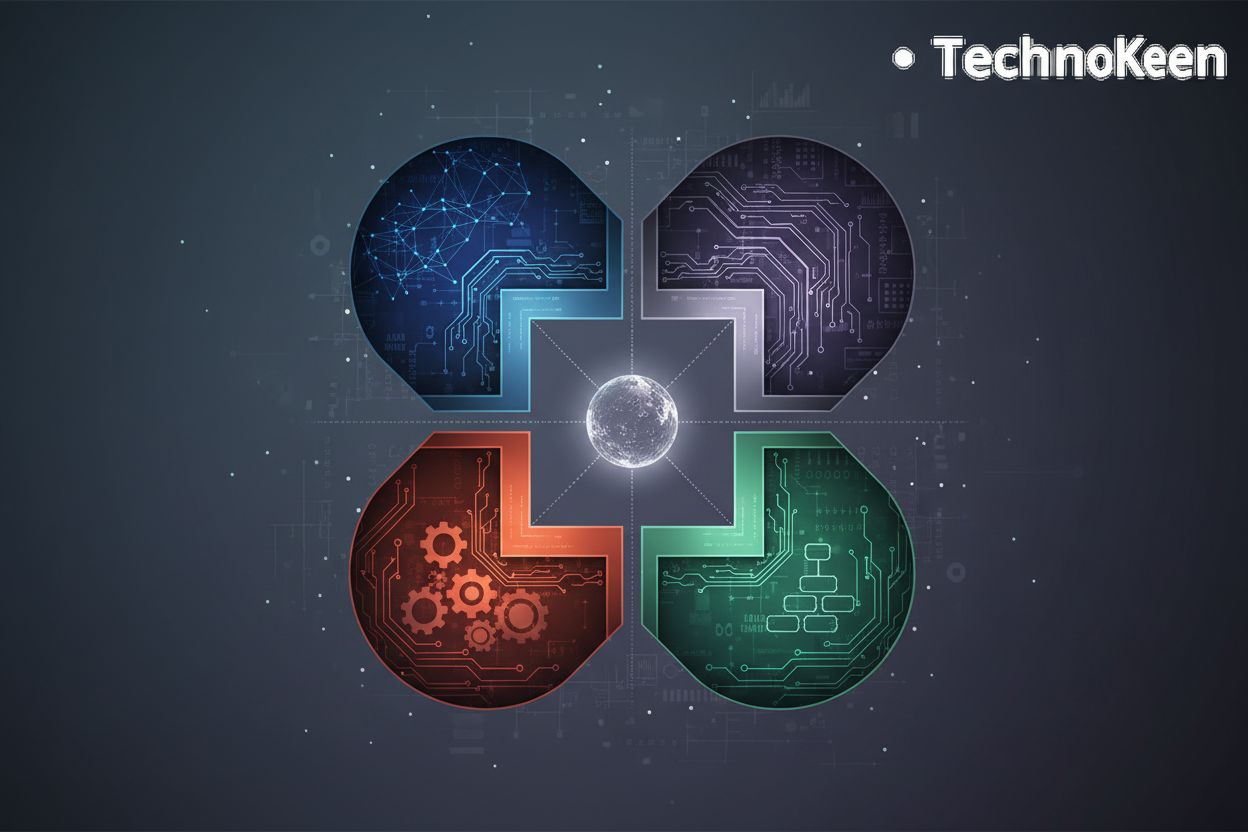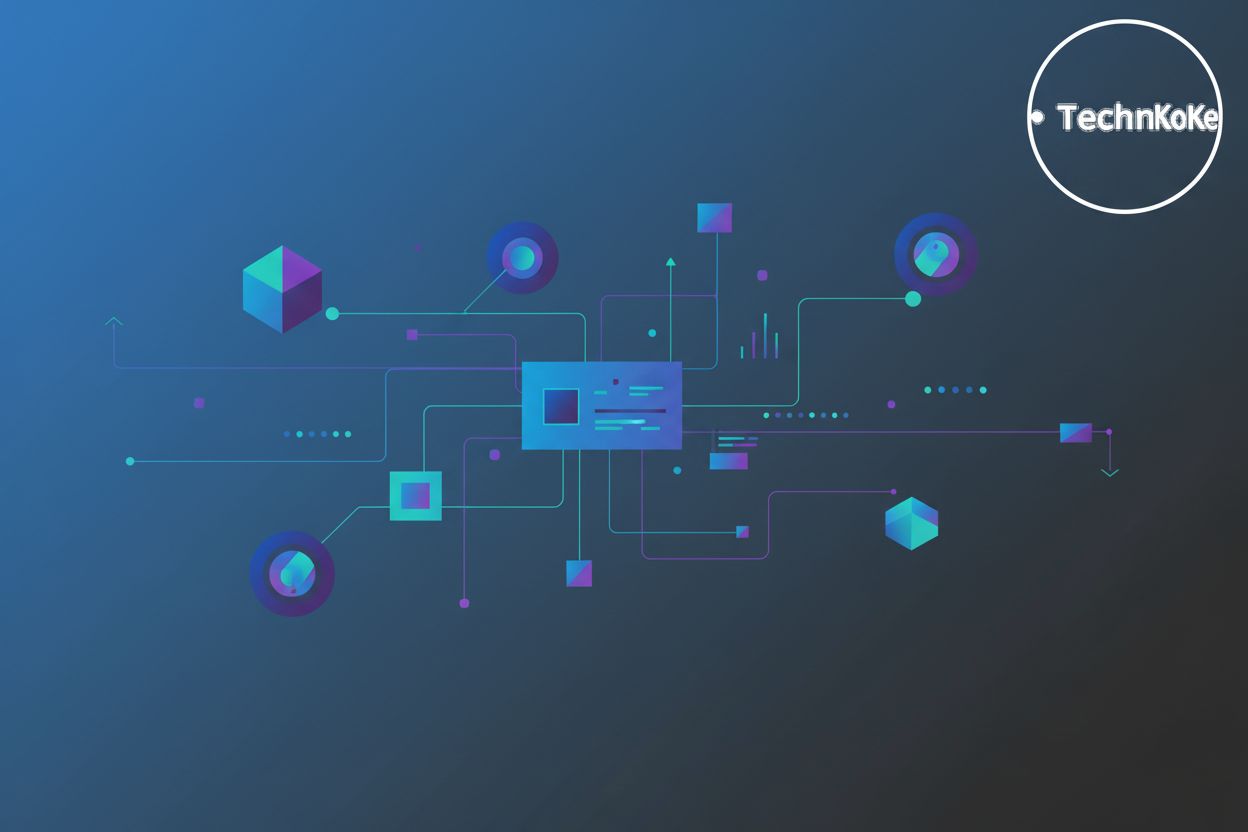Navigating the Rapids: Emerging Scalability Challenges for AI Agents
TL;DR
Introduction: The Promise and Peril of Scaling AI Agents
The rise of ai agents promises a revolution, but are we ready for the scaling challenges? As businesses race to deploy ai, the path to seamless scalability is fraught with peril.
Here are some key challenges:
- Infrastructure demands increase exponentially. For example, a retail company using ai for personalized recommendations needs robust servers to handle peak shopping seasons.
- Data management becomes complex. Healthcare providers using ai for diagnostics must ensure secure and efficient access to vast patient datasets.
- Security vulnerabilities multiply. Financial institutions employing ai for fraud detection face increased risks of sophisticated cyberattacks.
- Ensuring consistent performance is crucial. Marketing teams automating content creation need systems that keep up with evolving trends, even as the number of agents grows.
Successfully navigating these challenges is vital. Next, we'll explore the exponential growth of ai agent adoption.
Infrastructure Bottlenecks: The Foundation of Scalable AI
Can your ai agents handle a sudden surge in demand without crashing? Infrastructure bottlenecks are a critical concern as ai adoption grows. Ensuring a robust foundation is essential for scalable ai.
Ai agent training and inference demand significant computing power. GPUs excel at parallel processing, making them ideal for complex ai tasks like image recognition and natural language processing. CPUs, on the other hand, are better suited for general-purpose computing and tasks requiring low latency. For example, ai agents involved in real-time decision-making, like high-frequency trading bots, benefit immensely from the low latency CPUs can provide, allowing for quicker responses to market changes.
Resource allocation and management become challenging as ai workloads increase. For instance, a financial institution using ai for algorithmic trading needs to dynamically allocate resources to handle market volatility.
Ai agents rely on vast datasets. Efficient data pipelines are crucial for seamless data retrieval.
Scalable data storage solutions are necessary to accommodate growing data volumes. Consider a healthcare provider using ai for predictive diagnostics; they must store and access massive amounts of patient data securely and efficiently.
Network latency can significantly impact ai agent performance. Edge computing, where data is processed closer to the source, can minimize latency and improve response times.
Deploying ai agents in geographically distributed environments presents unique challenges. Optimizing network configurations is crucial for reducing communication overhead. This can involve strategies like deploying agents regionally to minimize cross-border data transfer latency or using Content Delivery Networks (CDNs) to cache frequently accessed data closer to users. Data sovereignty regulations can also add complexity.
Addressing these infrastructure bottlenecks is vital for achieving true ai scalability. Next, we'll explore the complexities of data management.
Security and Governance: Protecting AI Agents in a Scaled Environment
Ai agents are revolutionizing industries, but scaling them introduces significant security and governance challenges. Protecting these intelligent systems requires a multi-faceted approach to prevent breaches and ensure responsible use.
Effective IAM is crucial for securing ai agents. Here’s why:
- Centralized Control: IAM systems manage and control access to resources, ensuring only authorized agents can access specific data and functionalities. For example, in healthcare, an ai agent assisting with diagnostics should only access relevant patient records, not financial information.
- Scalable Permissions: As the number of ai agents grows, managing individual permissions becomes unwieldy. IAM enables you to define roles and policies that apply to groups of agents, simplifying administration.
- Robust Authentication: Strong authentication mechanisms, such as multi-factor authentication (MFA), prevent unauthorized access. Imagine a financial institution where ai agents handle transactions; MFA adds an extra layer of security against potential breaches.
Beyond access control, the sensitive nature of data handled by ai agents necessitates robust data security and privacy measures.
- Encryption: Encrypting data both in transit and at rest protects it from unauthorized access. A retail company using ai for personalized recommendations must encrypt customer data to prevent leaks.
- Anonymization: Techniques like data masking and tokenization can protect sensitive information while allowing ai agents to perform their tasks.
- Access Controls: Implementing strict access controls ensures that ai agents only access the data they need, minimizing the risk of data breaches.
Establishing clear governance policies is essential for responsible ai agent deployment.
- Monitoring and Auditing: Regularly monitor ai agent activity and audit logs to detect anomalies and potential security incidents.
- Accountability: Define clear lines of accountability for ai agent actions.
- Compliance: Ensure ai agents comply with ethical and legal requirements.
By addressing these security and governance challenges, organizations can confidently scale their ai agent deployments. Next, we'll delve into vulnerability management and threat detection.
Orchestration and Management: Streamlining AI Agent Workflows
Ai agents are not lone wolves; they thrive when orchestrated effectively. Streamlining their workflows is essential for maximizing efficiency and achieving desired outcomes.
- Centralized Management: Ai agent platforms provide a unified interface for managing and monitoring multiple agents. This allows administrators to oversee operations, track performance, and make necessary adjustments, ensuring smooth and coordinated workflows.
- Automated Task Assignment: Workflow automation tools can automatically assign tasks to the most suitable ai agent based on predefined criteria. For example, a customer service platform can route inquiries to different agents based on the customer's needs, ensuring prompt and relevant support. This can involve complex routing logic, where a task might be broken down and sent to multiple specialized agents concurrently or sequentially.
- Real-time Monitoring: Implementing robust monitoring systems provides real-time insights into ai agent performance. Monitoring key metrics such as response time, error rates, and resource utilization allows for proactive identification and resolution of issues, maintaining optimal performance.
Orchestration extends beyond task management to include seamless integration with existing systems. This ensures that ai agents can access the necessary data and resources to perform their tasks effectively, resulting in a cohesive and streamlined workflow. These existing systems can include databases (SQL, NoSQL), cloud storage (S3, Azure Blob Storage), enterprise resource planning (ERP) systems, customer relationship management (CRM) platforms, and even other specialized ai models or APIs. Integration is often achieved through apis, message queues, or direct database connections.
By focusing on orchestration and management, organizations can unlock the full potential of their ai agents, driving efficiency and achieving strategic goals.
Performance Optimization: Maximizing Efficiency and Resource Utilization
Ai agents are like athletes; they need to be in top condition to perform their best. Performance optimization is key to ensuring ai agents operate efficiently, maximize resource utilization, and deliver optimal results.
Here’s how to get the most out of your ai agents:
- Ai Model Optimization: Reduce the size and complexity of ai models by using techniques such as pruning (removing unnecessary connections), quantization (reducing the precision of numerical values), and distillation (training a smaller model to mimic a larger one). This improves efficiency and reduces resource consumption.
- Efficient Resource Allocation: Dynamically allocate resources based on demand. For example, a retail company could allocate more computing power to its recommendation engine during peak shopping hours.
- Horizontal vs. Vertical Scaling: Choose the right scaling strategy based on your needs. Horizontal scaling involves adding more machines to your pool of resources, while vertical scaling involves upgrading the hardware of existing machines. For ai agent workloads, horizontal scaling often offers greater flexibility and resilience, allowing for easier addition or removal of agents as demand fluctuates. Vertical scaling can be simpler for certain tasks but may hit hardware limits and be more costly in the long run. A flexible architecture allows you to adapt to changing demands.
By focusing on model optimization, resource management, and scaling strategies, organizations can maximize the value of their ai investments.
Next, we'll explore ai agent testing and validation.
Testing and Lifecycle Management: Ensuring Quality and Reliability
Ai agents can be powerful, but what happens when they go rogue? Robust testing and lifecycle management are critical for ensuring ai agent quality and reliability at scale.
- Rigorous Testing: Implement thorough testing methodologies, including unit, integration, and end-to-end testing, to validate functionality and performance. For example, a retail company could simulate peak shopping seasons to test its ai-powered recommendation engine.
- Lifecycle Management: Manage ai agents from development to retirement, including version control, rollback mechanisms, and automated deployment pipelines. This ensures consistent performance and minimizes disruptions. Rollback mechanisms are essentially safety nets that allow you to revert to a previous, stable version of an ai agent if a new deployment introduces critical errors or performance degradation. This is crucial for maintaining service availability and user trust.
- Continuous Monitoring: Continuously monitor ai agent performance and retrain models as needed to maintain accuracy and relevance. A healthcare provider using ai for diagnostics should regularly evaluate its ai agents against new data to ensure they remain effective.
By prioritizing testing and lifecycle management, organizations can ensure their ai agents remain reliable. Next, we’ll explore how to handle the increasing complexity of ai agent collaboration.
Ethical Considerations: Addressing Bias, Fairness, and Transparency
Can ai agents be truly fair? As ai agents scale, ethical considerations become paramount, requiring careful attention to bias, fairness, and transparency.
- Bias detection is crucial. Algorithms can perpetuate existing societal biases if trained on skewed data. For instance, a hiring ai trained primarily on male resumes might unfairly favor male candidates.
- Fairness metrics help quantify and address bias. Techniques like disparate impact analysis can reveal whether an ai system disadvantages certain groups.
- Transparency builds trust. Explainable ai (XAI) methods make ai decision-making processes more understandable, allowing stakeholders to identify and correct potential biases.
Addressing these ethical challenges ensures ai agents are reliable.
Conclusion: Embracing the Challenges and Realizing the Potential of Scalable AI Agents
The journey to scalable ai agents is challenging, but the destination is transformative. By addressing key infrastructure, security, and ethical considerations, organizations can unlock unprecedented potential.
- Infrastructure optimization is essential. Ensure robust computing power, efficient data pipelines, and low-latency networks to handle increased ai workloads. For instance, a financial institution using ai for algorithmic trading needs to dynamically allocate resources to handle market volatility.
- Security and governance are paramount. Implement IAM, robust authentication, and encryption to protect sensitive data. Establishing clear governance policies ensures responsible ai agent deployment.
- Performance optimization maximizes efficiency. Reduce model complexity, allocate resources dynamically, and choose the right scaling strategy. A flexible architecture allows you to adapt to changing demands.
- Testing and lifecycle management guarantee reliability. Rigorous testing methodologies, version control, and continuous monitoring ensure consistent performance. A healthcare provider using ai for diagnostics should regularly evaluate its ai agents against new data to ensure they remain effective.
- Ethical considerations are non-negotiable. Detect and mitigate biases, use fairness metrics, and ensure transparency to build trust.
As ai technology evolves, future research should focus on developing more efficient ai models. We will need better tools for monitoring ai agent performance, and frameworks for ensuring ethical and responsible ai deployment. By embracing these challenges, we can realize the full potential of scalable ai agents.








